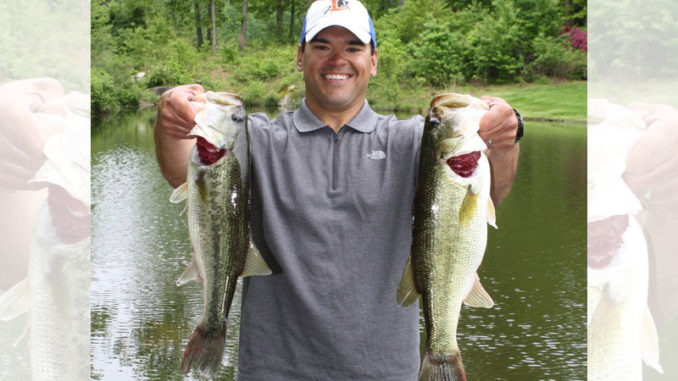
Bass head for shallows this month
March can bring on one of the most-exciting and challenging times of the year to fish. Bass are no doubt on the move, the weather is all over the map and heavy rains can muddy up water in a hurry.
What to look for? In February, you have lots of fish still in wintering spots — stable areas with not much current and good clarity. These fish can still be really deep, but by March, the bulk of them have moved up.
During any warming trend, an ideal place to start your search is a flat next to deep water. Deep is, of course, relative to the body of water you are fishing. Deep can be a small, 2-foot contour line on a natural lake or pond or a 50-foot drop-off at Fontana Lake. Across most of North Carolina, I’m looking for good fishing this month in water less than six feet deep.
Shallow water adjacent to channels and steep drops is key. On rocky lakes, the type and size of rock is important, as many fish prefer to look for gravel bottoms early in the year so they can be on the lookout for crawfish just emerging from the winter. It is a good time for jigs and crawfish-colored crankbaits. I like the 6th Sense Crush 50X in Wild Lava craw — kind of a bright orange/red bait. Crawfish often show bright colors when spawning, and bass can really get keyed in on oranges and reds. The Crush 50X is a square-billed bait that comes through heavy cover well and works especially well banging off rocks. Keep a flipping stick handy as well to pick apart high percentage spots.
Upper lake areas are promising in good weather
There are two areas of every lake that I like to pay attention to early in the year — the upper end and the lower end. Both offer great fishing depending on the weather.
The upper end is often overlooked, as it is often muddy and cold in the winter, but if the weather is turning by March. I really like the upper end of reservoirs. The sun hitting the shallow, stained water can get it heated up fast. These fish will move to the bank and are really easy to catch, but they can disappear just as fast under cold front conditions or fresh, cold, muddy water. I really like several baits for this upper-end, stained-water scenario — a 6th Sense 50X crankbait in crawfish color, a Dave’s Tournament Tackle spinnerbait with Colorado blades, a 4-inch Culprit Incredicraw, and a Dave’s Swim jig with a DW3 Trailer.
This is the time to use baits that displace lots of water so the fish can find them. I often start with a spinnerbait or crankbait until I get a few bites — or some misses — then I slow down and flip the Incredicraw at any cover that gets in my way while I’m just going down the bank in protected pockets. I like black and Bamabug colors for stained water. If the water warms to the upper 50s the swim-jig bite with that big DW3 pumping behind it is outstanding. Keep it simple in the murky water; either white or black and blue will work. This pattern can last all month, as cold fronts constantly come in and knock the bass back off the banks.
Lower lake areas are usually more stable, most pressured
The more-consistent area is the lower end of the lake. It is often more stable but also gets the most fishing pressure. Water tends to be much clearer down the lake, so finesse baits become the best option. The lower end is better under bad weather conditions.
I like three baits for the lower end if the water is clear — a drop-shot T-rex finesse worm, a jerkbait, and a finesse jig. If it is really clear and cold, I like a drop-shot T-rex worm in natural colors like ayu and watermelon. I’ll use light, 7-pound Sunline flurocarbon and a 1/4-ounce weight for water deeper than 10 feet, but in the shallows, I like a 1/8-ounce weight.
If I’m having a tough time finding bass, that is when I rely on a jerkbait, just covering water, until I figure out a pattern. Maybe they are on main points, secondary points or in the back of steep, deep pockets. You have to fish it all to know, so you need to cover the water. Once you catch some or see some, Dave’s Ace in the Hole jig with a DW1 or DW2 finesse jig trailer is deadly. I’ve watched my co-host of Carolina’s Perfect Cast, Dave Wolak, catch way too many big fish on the these tiny jigs and DW trailers not to get on the same bite for myself. I recently caught one of my biggest fish on that little Dave’s jig and DW2 combo: an 11-pound, 5-ounce mule!
Good luck and go catch yourself a mule this March.



Be the first to comment